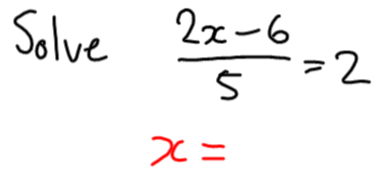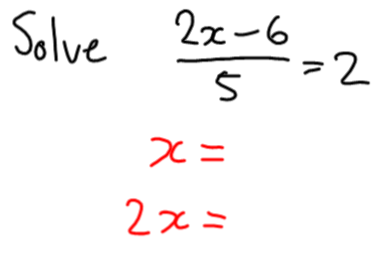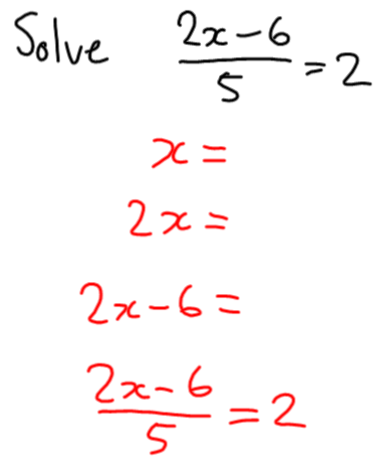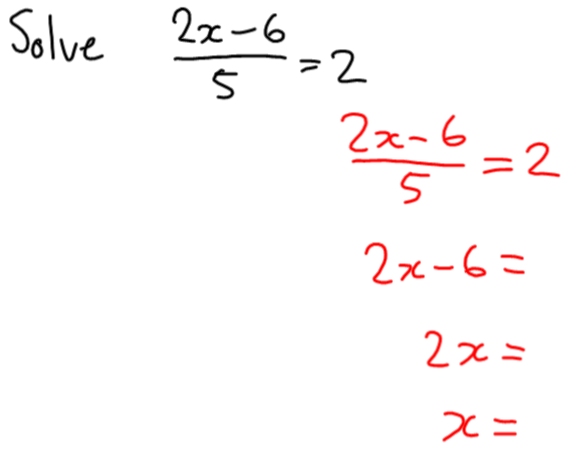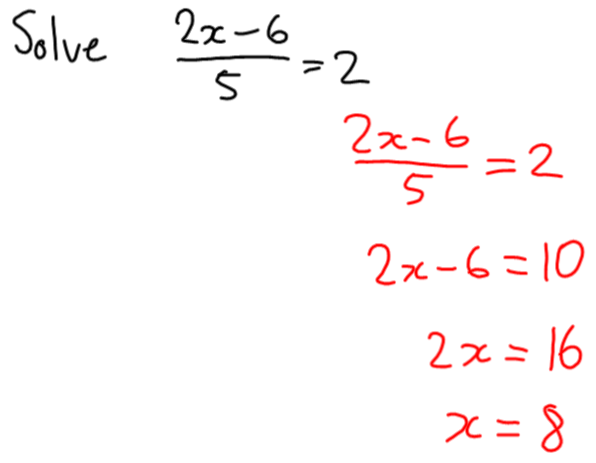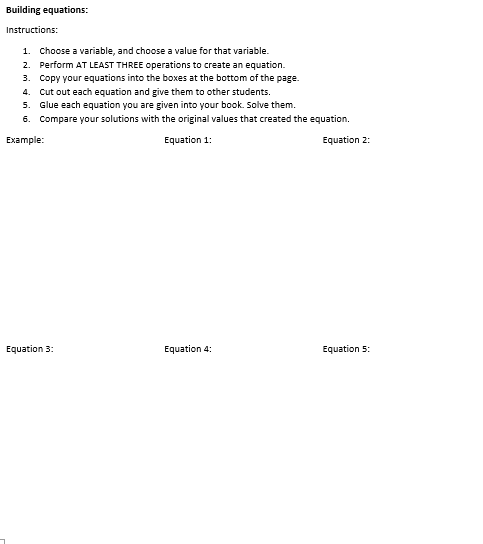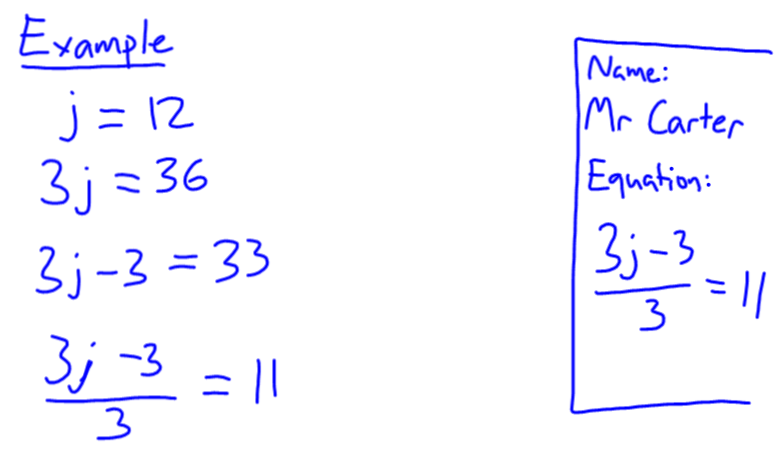The other day I wrote a post about having students build their own equations. I decided to use this idea as a starting point for solving equations by backtracking.
The class has already solved equations in a number of ways, and even used flow charts to solve them with backtracking. But now I’m trying to introduce them to more formal algebraic notation to show their backtracking. As it turns out, they’ve already written their working out like this before, last lesson. Now they need to learn to write each step working backwards.
I wrote the following on the interactive whiteboard:
I made it clear that I was making this equation up as I went, and that I was following the exact same process as they did when they constructed their own equations. The only difference being that I haven’t written down all the steps for them to see.
Their job is to figure out what those steps were.
I asked them what I would’ve done first. “Chosen x as a variable, and a value.”
Of course, we don’t know what that value is yet. But we can work out what operations I did to it. So what did I do first? “Timesed the x by 2.” One of these days they’ll learn to say “multiplied” instead of “timesed”.
Then, it was subtract 6, then divide by 5. And, of course, our final result was 2.
Now, we need to work backwards through these steps. Here’s the cool bit, and the advantage of using an IWB for this lesson: I can drag the steps around and reorder them:
So in the last step, I divided by 5 and got 2. What number did I divide by 5?
And what number did I subtract 6 from to get 10? What number did I multiply by 2 to get 16?
And now we have our solution. 🙂
Now, I’m not expecting students to write these steps out forwards, just to write them out again to do them backwards. But I’m hoping that seeing this highlights for students that these steps of working that we write down are not arbitrary, but actually result from somewhere.
I can imagine using blank cards as a way to have students write down the steps, then reorder them themselves. Unfortunately, this was an idea I only had part way through the lesson.
Unsurprisingly, the expectation that students should show each step of working (and particularly my warning that I would mark any quiz questions missing working as wrong) annoyed some of them, particularly the stronger students. “Why should we show our working if we already know the answer.” Of course, I don’t particularly care that their answer is correct if they can’t convince me that their answer is correct.

